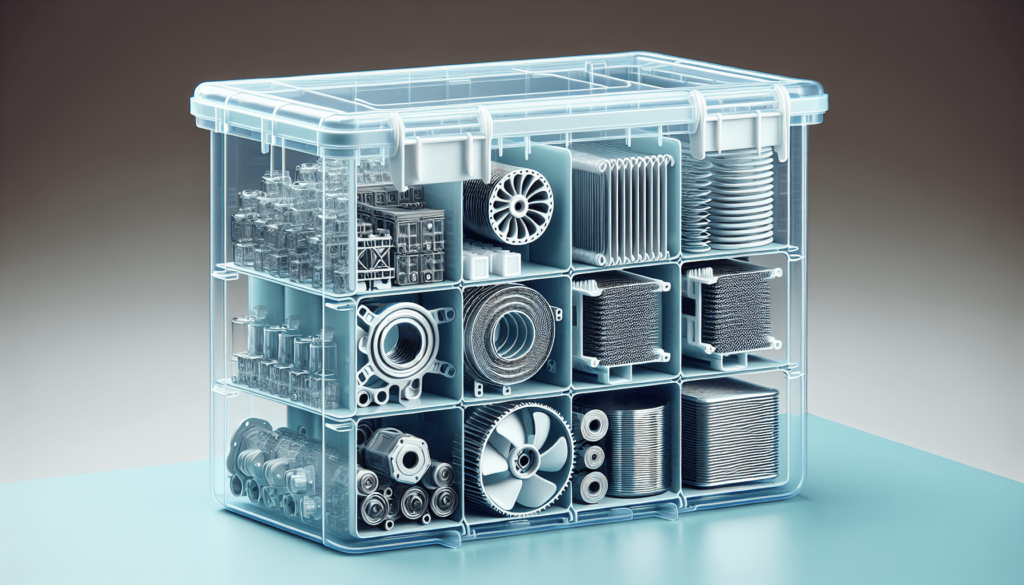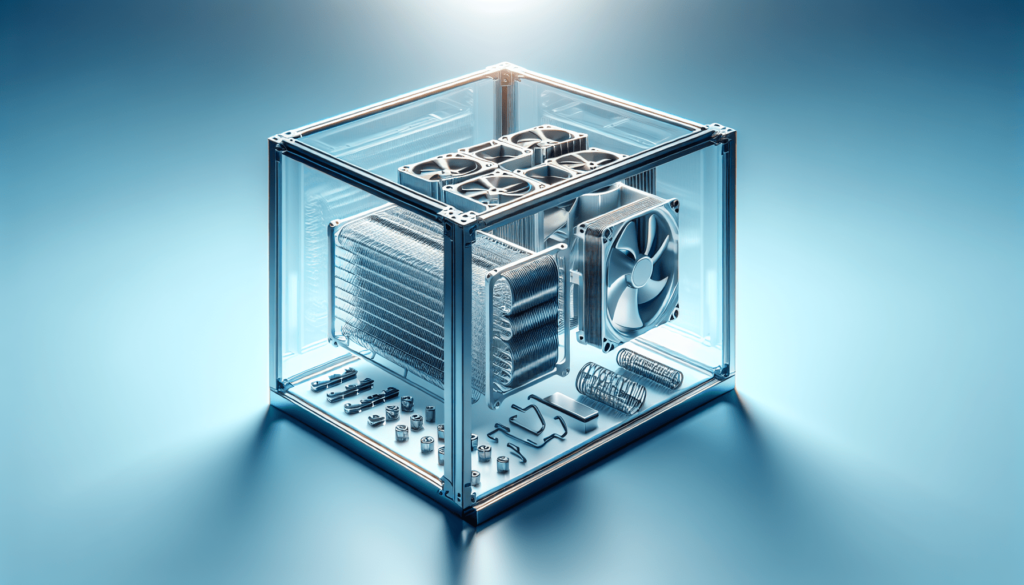How To Properly Store True Cooler Parts When Not In Use
Have you ever wondered how to keep your True cooler parts in pristine condition when they’re not in use? Proper storage of cooler components can significantly extend their lifespan and maintain optimal performance. Whether you have a commercial kitchen, a convenience store, or you’re simply a dedicated hobbyist, knowing how to store your cooler parts correctly can save you time and money in the long run.
Understanding True Coolers
When you invest in a True cooler, you acquire a top-quality refrigeration unit that’s designed to last. These coolers are known for their durability and efficiency, but like all machinery, they require proper care and maintenance, especially when parts are not in use.
True coolers are commonly used in various settings, including restaurants, cafeterias, and retail environments. They consist of key components such as compressors, evaporators, condensers, and fans. Each of these parts plays a pivotal role in keeping your goods at the right temperature. Therefore, proper understanding of how to handle these components when they are not in use is essential.
Why Proper Storage Matters
Storing your True cooler parts improperly can lead to wear and tear, corrosion, and other issues that could potentially render the parts ineffective when you need them again. Take a moment to think about the costs associated with replacing these components, not to mention the inconvenience of downtime in your operations. Choosing to take the extra step to store parts properly can protect your investment and ensure that your cooler operates efficiently when needed.
Steps to Properly Store True Cooler Parts
When it comes to storing your True cooler parts, there are several steps you can follow. Let’s break these down into manageable tasks to ensure you’re doing it right.
1. Clean the Parts Thoroughly
Before storing any cooler components, make sure they are clean. Dirty or greasy parts can attract pests and may lead to corrosion or damage over time.
How to Clean Your Cooler Parts
- Disassemble: Remove parts like shelves, trays, and any removable elements.
- Wash: Use warm, soapy water to wash the parts. Avoid harsh chemicals that could damage the finish.
- Dry Completely: Wipe each part with a clean, dry cloth to ensure no moisture is left behind.
This simple step can make all the difference in extending the shelf life of your cooler components.
2. Inspect for Damage
Once the parts are clean and dry, inspect them for any signs of damage. Look for cracks, rust, or any wear and tear. Identifying these issues early on can save you from unexpected repairs later.
What to Look For
- Visible Cracks: Check for any breaks in plastic or metal.
- Rust: Look for spots of rust, especially on metal parts.
- Wear: Pay attention to rubber seals and gaskets. If they’re starting to wear out, it might be time to replace them before storing.
3. Organize your Parts
Keeping your parts organized makes it easier to find them when needed. You can use bins or racks to store different components together.
Suggested Storage Solutions
| Storage Solution | Description | Best For |
|---|---|---|
| Plastic Bins | Stackable and durable | Small parts like screws, nuts |
| Shelving Units | Vertical storage | Larger parts like shelves |
| Clear Containers | Visibility for quick access | Mixed items for easy identification |
Organizing your parts will save you time and hassle in the future, allowing for a more efficient setup when it’s time to put everything back together.
4. Use Proper Environmental Conditions
The environment in which you store your True cooler parts can greatly affect their longevity. You want to find a place that has stable temperatures and humidity levels. A cool, dry area is ideal.
Considerations for Optimal Storage Conditions
- Temperature: Avoid exposing parts to extreme heat or cold. Ideally, aim for a temperature range between 50°F to 75°F.
- Humidity: Excess moisture can lead to rust, so a dehumidifier might be a good investment if you live in a humid area.
- Pest Control: Ensure the storage area is free from pests and potential contaminants.
By taking these factors into account, you can create a safe home for your cooler parts that minimizes the risk of damage.
5. Protect Parts with Proper Wrapping
When storing smaller parts or those that are susceptible to scratching, consider wrapping them in protective layers.
Effective Wrapping Materials
- Bubble Wrap: Great for fragile items like glass shelves.
- Plastic Bags: Use ziplock bags for small screws or nuts to keep them safe and organized.
- Foam Pading: Ideal for larger parts that need a bit more protection.
Using appropriate materials ensures your parts remain in top condition and prevents any scratches or marks during storage.
6. Label Everything
Labeling your storage containers is crucial for efficiency when you go to retrieve parts later. Clear labels can save you from rummaging through all your bins, getting frustrated, and wasting time.
Tips for Effective Labeling
- Use Durable Labels: Waterproof and resistant labels will hold up over time.
- Be Specific: Include part names and sizes on the label for easy identification.
- Color-Coding: You could use different colors for different types of parts to enhance visual organization.
This small step can make a big difference in how quickly you can find what you need when it’s time to reassemble.

Avoiding Common Pitfalls
Let’s face it, everyone makes mistakes from time to time. However, by being aware of some common pitfalls in the storage process, you can easily avoid them.
1. Skipping the Cleaning Process
Cleaning may seem like an extra chore, but neglecting this step can lead to bigger headaches later on. Always make it a point to clean your parts before storing them to mitigate potential issues.
2. Overpacking Storage Areas
While it might be tempting to cram everything into one box or bin to save space, this can lead to damage. Overpacking can cause parts to become scratched, bent, or otherwise ruined.
3. Forgetting About Temperature
Ignoring the temperature and humidity of your storage area is a common misstep. Make the effort to check these conditions regularly, and adjust if necessary to keep everything in ideal shape.
Regular Checks on Stored Parts
After your parts are stored away, it is still important to check on them periodically. A quick inspection can ensure that everything remains in good condition.
Why Regular Inspections are Important
- Preventative Maintenance: By regularly checking your parts, you can catch any potential issues before they become significant problems.
- Condition Monitoring: It allows you to track how your items are holding up in storage and make adjustments if needed.
- Readiness Preparation: Knowing the condition of your parts means they’ll be ready when you need them without any unexpected surprises.
Make it a habit to check on your stored cooler parts every few months for peace of mind.

Long-Term Storage Considerations
For parts that may be stored for extended periods, consider taking additional steps to ensure they’re preserved effectively.
1. Use Desiccants
Desiccants are materials that absorb moisture. You can place them in your storage bins to keep humidity levels down and protect your parts.
Recommended Desiccant Material
- Silica Gel Packets: These are commonly used and readily available. Just make sure to replace them periodically to maintain effectiveness.
2. Wrap Electrical Components
If you’re storing electrical parts, it’s wise to wrap them properly to prevent short circuits or damage.
Recommended Storage for Electrical Parts
- Anti-Static Bags: These bags help discharge any static electricity that could potentially damage sensitive electrical components.
3. Vacuum-Sealing for Extreme Conditions
If you anticipate extremely long storage or tricky climatic conditions, consider vacuum-sealing your parts. This eliminates air and moisture exposure, keeping everything in excellent condition.
Conclusion
Properly storing your True cooler parts when they’re not in use can seem tedious, but the benefits far outweigh the effort involved. By taking the time to clean, inspect, organize, and store your parts correctly, you can ensure that they remain in top condition for when you need them again.
It’s about creating a reliable system that preserves your investment and saves you headaches down the line. You wouldn’t want to run into problems when the heat is on, so remember these steps and check in on your storage every now and then. By following these practices, you can rest assured that your True cooler parts are ready to go whenever you need them. Happy storing!
